Clipart tagged: ‘tentacle’
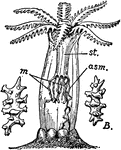
Alcyonarian
"An expanded Alcyonarian zooid, showing the mouth surrounded by eight pinnate tentacles. st, Stomodaeum…
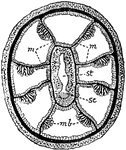
Alcyonarian
"Transverse section of an Alcyonarian zooid. mm, Mesenteries; mb, muscle banners; sc, sulcus; st, stomodaeum."…
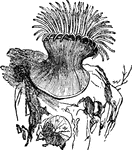
Anemone
"A popular name of the species of actinia and some other Actiniadae. It seems to have been first applied…

Anemone
"A popular name of the species of actinia and some other Actiniadae. It seems to have been first applied…
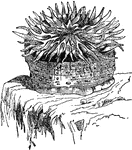
Anemone
"A popular name of the species of actinia and some other Actiniadae. It seems to have been first applied…
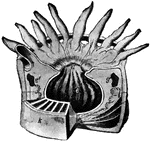
Anemone
"Sea anemone dissected; c, tentacles; d, mouth; e, stomach; white lines above k, the mesenteries." —Davison,…
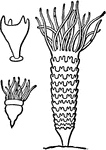
Aurelia
"Development of Aurelia. Above to the left, young scyphistoma with four perradial tentacles. Below to…
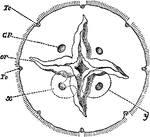
Aurelia Aurita
"Surface view of the sub-umbrella or oral aspect of Aurelia aurita, to show the position of the openings…

Aurelia Aurita
"Half of the lower surface of Aurelia aurita. The transparent tissues allow the enteric cavities and…

Epithelium
"Portion of epithelium from the tentacle of an Actinian, showing three supporting cells and one sense…

Muscular Cells
"Muscular cells of medusae (Lizzia). The uppermost is a purely muscular cell from the sub-umbrella;…
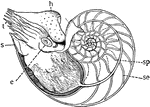
Pearly Nautilus
"Pearly Nautilus. e, eye; h, hood, a muscular portion of the foot which protects the softer parts; s,…

Mouth of the sea-anemone
"Their tentacles, which are disposed in regular circles, and tinged with a variety of bright lively…

Sundew
"Leaf of Sundew, enlarged, with the tentacles on one side infected over a bit of meat placed on the…

Tentacles
"1, Portion of epithelium from the tentacle of an Actinian, showing three supporting cells and one sense…